Sports
/ArcaMax

Blaney wins at Pocono! Reigning NASCAR champ records second Cup Series win of season
Ryan Blaney is a two-time NASCAR winner this season.
The Cup Series’ defending champion held off the field late in a competitive race at Pocono Raceway in Long Pond, Pa., to secure his second victory of the season. It marks the 12th career win in 327 Cup starts for the driver of the No. 12 Ford.
Less than a month after more than 80 of his ...Read more

Mayor Brandon Johnson says 'no decision' yet on moving Chicago's NASCAR race from 4th of July weekend
CHICAGO — Mayor Brandon Johnson was tight-lipped Monday on the fate of the NASCAR Chicago Street Race after a lackluster audience showing and criticism from some over the diversion of hundreds of police officers to Grant Park during the historically violent holiday weekend.
Speaking at a news conference at Chicago police headquarters, the ...Read more

Alex Bowman wins rain-shortened Chicago Street Race to punch ticket to NASCAR playoffs
Alex Bowman is back in the NASCAR playoffs.
The 31-year-old driver for Hendrick Motorsports snapped an 80-race winless streak on Sunday in downtown Chicago, taking the lead before the final stage and holding off the field to return to victory lane for the first time in two years.
Sunday’s Grant Park 165 — marking the second straight year ...Read more

NASCAR Chicago Street Race: For second year in a row, rain interrupts Grant Park 165
CHICAGO — Fans — and once again, rain — flooded downtown Chicago Sunday for the NASCAR Chicago Street Race weekend’s main event, the Grant Park 165.
Thousands watched as race cars roared by on the city streets between lengthy delays caused by intermittent downpours. Rain fell hard as the race’s start was delayed half an hour and ...Read more
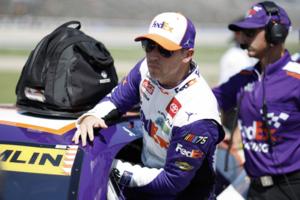
Michael Jordan and Denny Hamlin open 'Airspeed,' new home of 23XI Racing
HUNTERSVILLE, N.C. — Denny Hamlin pictured an NBA or NHL arena when designing the main floor of “Airspeed.”
LED ribbon boards display messages promoting NASCAR statistics and that week’s upcoming race as 23XI Racing cars get built. Representing speed, vibrant red, white and black stripes line the ceiling inside the new 114,000-square-...Read more
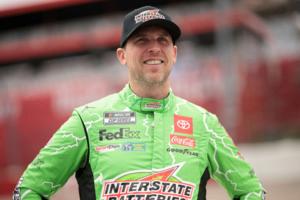
Denny Hamlin, Brad Keselowski have made auto racing their business
LOUDON, N.H. — Denny Hamlin and Brad Keselowski serve as an inspiration to young drivers for reasons beyond their exploits on the ovals and road courses on the NASCAR Cup Series tour.
What’s not to admire about these two?
Since being named the Sunoco Rookie of the Year for Joe Gibbs Racing in 2006, Hamlin has made 674 Cup Series starts ...Read more
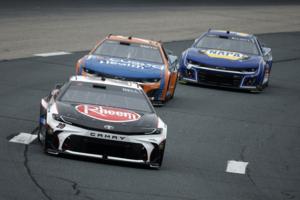
After six hours, Christopher Bell wins NASCAR race in OT at rain-drenched New Hampshire
Christopher Bell didn’t need a shortened NASCAR race to secure a victory.
Less than a month removed from his win at a truncated Coca-Cola 600 at Charlotte, N.C., lighting and rain threatened New Hampshire Motor Speedway throughout the weekend. Qualifying for the Cup Series race was wiped out, and the start time on Sunday got bumped up.
Bell,...Read more
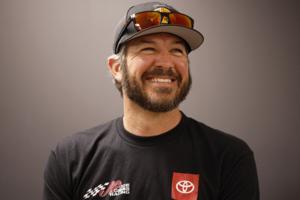
Martin Truex Jr., NASCAR champion and Cup Series' oldest driver, to retire after season
CHARLOTTE, N.C. — It’s Martin Truex Jr.’s final season as a full-time NASCAR driver.
The Cup Series’ oldest active driver confirmed reports that he plans to retire following the 2024 NASCAR season in a news conference Friday afternoon at Iowa Speedway.
“I will not be back full-time next year,” Truex told reporters. “It’s been a...Read more
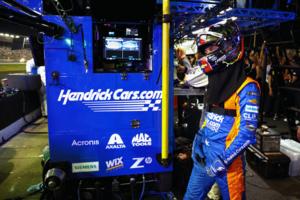
Why NASCAR approved Kyle Larson's playoff waiver after driver missed Charlotte for Indy
CHARLOTTE, N.C. — Kyle Larson’s waiver request has been granted.
The NASCAR star is eligible to compete for the 2024 Cup Series championship after missing last week’s Coca-Cola 600 to race in the Indianapolis 500 on the same day and attempt the vaunted “double.” Hendrick Motorsports submitted a waiver request early last week, and ...Read more
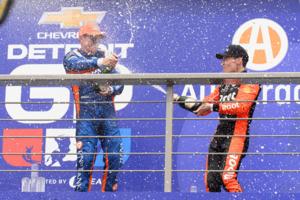
Scott Dixon wins 4th Detroit Grand Prix; first one on downtown streets 'feels awesome'
DETROIT — Scott Dixon avoided the chaos on the narrow, tight, bumpy 1.7-mile, 9-turn course on the streets of downtown to win the Chevrolet Detroit Grand Prix on Sunday afternoon.
Detroit always has been kind to Dixon, who won on Belle Isle in 2012, ’18 and ’19 and now adds an impressive victory in a race which returned on the streets of ...Read more
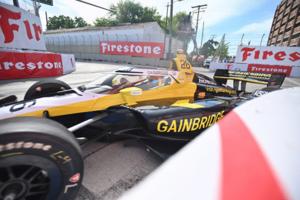
Colton Herta wins pole for Detroit Grand Prix, Alex Palou is second
DETROIT — Colton Herta earned the pole position for Sunday’s Chevrolet Detroit Grand Prix, topping the 27-car field with a lap of 1:00.547 on the downtown 1.7-mile, 9-turn street course on Saturday.
Herta, 24, the son of Warren, Mich., native Bryan Herta, won his 12th pole and first of the season in his No. 26 Gainbridge Honda for Andretti ...Read more
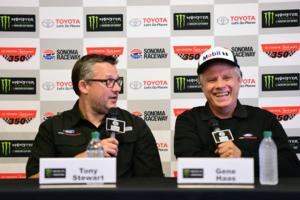
Stewart-Haas Racing, two-time Cup Series champion team, to close after NASCAR season
Stewart-Haas Racing is closing after this NASCAR season.
Co-owners Tony Stewart and Gene Haas announced the news Tuesday afternoon regarding the future of their racing team that has four cars in the Cup Series and won a pair of championships over the past 15 years.
“We have made the difficult decision to close Stewart-Haas Racing at the ...Read more

Scott Fowler: Jimmie Johnson on NASCAR, tragedy, the Coke 600 and his 2 scariest moments as a racer
CHARLOTTE, N.C. — Jimmie Johnson is, without question, one of the greatest drivers in NASCAR history. Three drivers rank at the very top of the all-time NASCAR Cup series champion standings, each with seven season titles apiece. They are Richard Petty, Dale Earnhardt Sr., and Johnson.
Of those three legends, Johnson is the only one who won ...Read more
Ricky Stenhouse Jr. fined $75K after brawl with Kyle Busch at NASCAR All-Star Race
CHARLOTTE, N.C. — Ricky Stenhouse Jr. got fined.
The driver of the No. 47 JTG Daugherty Racing Chevrolet received a $75,000 penalty on Wednesday morning after initiating the heated fistfight following Sunday’s All-Star Race at North Wilkesboro Speedway.
Busch did not receive any penalties.
Stenhouse Jr. threw a right hook at Kyle Busch ...Read more

Senators seek antitrust probe of F1 over rejecting Michael Andretti team
A bipartisan group of senators led by Amy Klobuchar urged the Justice Department to investigate whether Formula 1 is violating U.S. antitrust laws for rejecting a bid by Michael Andretti to join the multibillion-dollar motor racing series.
The senators cited concerns the racing series may be acting at the behest of foreign automakers to exclude...Read more

Trump makes pit stop at F1's Miami Grand Prix during weekend break in hush money case
Former President Donald Trump — and many of the world’s top brass that includes Elon Musk, Jeff Bezos and LeBron James — made an appearance Sunday afternoon at Formula 1’s Crypto.com Miami Grand Prix.
The 2024 presidential hopeful’s arrival to the Miami International Autodrome, a temporary track set up for the F1 race at Hard Rock ...Read more

Upset! McLaren's Norris beats Red Bull's Verstappen at the Formula 1 Miami Grand Prix
A fortunately-timed crash involving a Fort Lauderdale driver. A three-time world champion suddenly looking like an impatient Miami driver on Interstate 95. An upgraded car helping a driver with zero grand prix wins end one of the most dominant driver runs in a sport of dominant runs.
That was Sunday’s 2024 Formula 1 Crypto.com Miami Grand ...Read more

'It's now a sport here.' The Formula One auto racing spectacle is back in Miami Gardens.
MIAMI — Auto racing’s international circus, Formula 1, comes to town this week for the Crypto.com Miami Grand Prix, visit No. 3 to the Miami International Autodrome next to Hard Rock Stadium after two years of showing F1 can be as Miami as pastelitos and infuriating traffic.
Fast, expensive, overflowing with the rich and internationally ...Read more
Henry Payne: Andretti-Cadillac, Congress threaten F1 with anti-trust action for denying entry
DETROIT — The Andretti Cadillac race team is turning up the heat on Formula One in its bid to enter the world’s fastest open-wheel motorsport.
Michigan Rep. John James, R-Shelby Township, joined legendary race driver Mario Andretti at a Capitol Hill news conference Wednesday, warning Formula One of federal antitrust action if it does not ...Read more

More cheers than boos for Denny Hamlin at Dover after third NASCAR victory: 'I love winning'
Denny Hamlin waved his checkered flag to a mix of cheers and boos.
It wasn’t necessarily a chorus of dismay from the spectators in the grandstands at Dover Motor Speedway, as has been the case for the NASCAR Cup Series veteran in recent memory. Sure, Hamlin will always have his haters, but the booing contingent couldn’t help but be ...Read more
Popular Stories
- Martin Truex Jr., NASCAR champion and Cup Series' oldest driver, to retire after season
- Why NASCAR approved Kyle Larson's playoff waiver after driver missed Charlotte for Indy
- Henry Payne: Andretti-Cadillac, Congress threaten F1 with anti-trust action for denying entry
- After six hours, Christopher Bell wins NASCAR race in OT at rain-drenched New Hampshire
- Colton Herta wins pole for Detroit Grand Prix, Alex Palou is second





